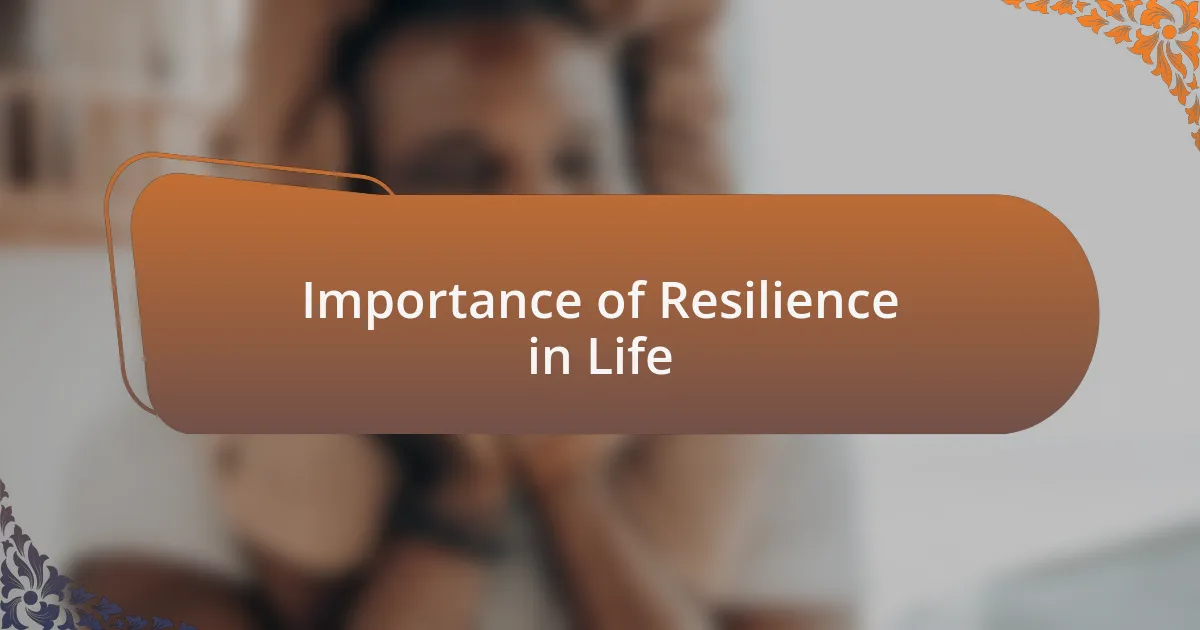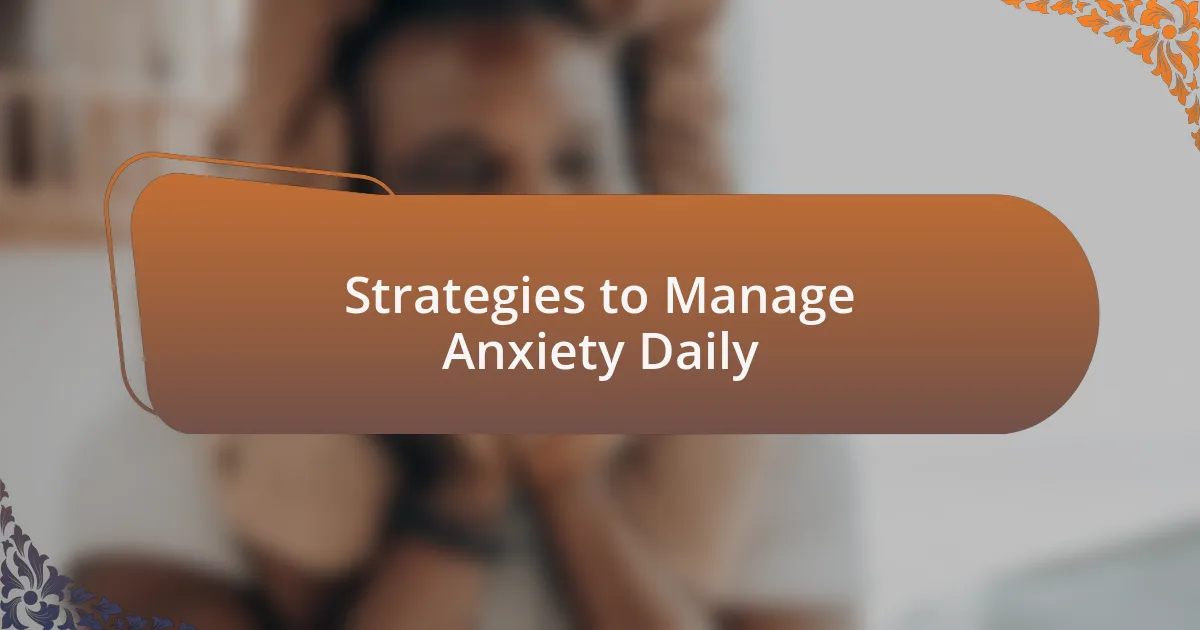Key takeaways:
- Selective mutism is an anxiety disorder in children that leads to silence in social situations, impacting communication and self-esteem.
- Building resilience through emotional growth and small successes can empower individuals with selective mutism to confront their fears and improve their social skills.
- Daily strategies like mindfulness, physical activity, and journaling help manage anxiety and foster a positive mindset.
- Encouraging open communication and sharing personal experiences can create supportive environments that enhance connections and promote healing.

Understanding Selective Mutism
Selective mutism is often misunderstood, yet it’s a complex anxiety disorder that primarily affects children. I remember feeling the weight of silence in social settings, as if the words I wanted to share were trapped inside me. How many times have you seen a child choose silence over speaking, not out of defiance but because of overwhelming fear?
For many, the struggle goes beyond just not speaking; it can lead to feelings of isolation and frustration. I often wished for a magic answer to unlock my voice when surrounded by peers. It’s crucial to realize that this silence doesn’t reflect a lack of desire to communicate; it’s a profound response to anxiety.
Understanding selective mutism involves recognizing the emotional landscape it creates. I think about those moments of connection that felt just out of reach, filled with longing to be heard. Isn’t it vital for us to foster spaces where every voice can be encouraged and welcomed, free from judgment?

Importance of Resilience in Life
Resilience plays a crucial role in navigating life’s challenges, particularly for those grappling with anxiety disorders like selective mutism. I still remember moments when I had to muster every ounce of strength just to step into a room filled with unfamiliar faces. The ability to bounce back from setbacks not only empowers individuals to confront their fears but also fosters a sense of hope that everything can improve with time.
Building resilience helps create a safety net, making it easier to handle the emotions that come with silence and anxiety. There were days when I felt like giving up, yet pushing through those tough moments taught me invaluable lessons about perseverance. Have you ever faced a situation where you thought you couldn’t continue, but somehow found the will to keep trying? That feeling of triumph is what resilience nurtures.
Over time, I have come to realize that resilience is not just about enduring hardship; it’s about learning and growing from those experiences. Each small victory, like uttering a single word in a quiet room, transformed the way I viewed my own abilities. Isn’t it inspiring to think that every challenge we face can lead to personal growth and a deeper understanding of ourselves?

How Selective Mutism Affects Children
Experiencing selective mutism can profoundly influence a child’s daily interactions and social development. I remember a friend who struggled to communicate in school, often missing out on group activities and friendships. It broke my heart to see how silence could alienate him, forcing him to navigate a world that felt overwhelmingly loud and demanding.
Children with selective mutism may also exhibit withdrawal in social settings, leading to feelings of loneliness or isolation. I recall how challenging it was for my cousin; her fear of speaking transformed playdates into anxious waiting periods. Have you ever felt like you were standing on the outside looking in, just wanting to join but feeling too afraid? That internal battle can create a cycle of anxiety that further hinders their ability to connect with peers.
Interestingly, selective mutism isn’t just about a lack of speech; it can also affect a child’s self-esteem and confidence. I once volunteered with a young girl who had trouble voicing her thoughts, yet her brilliant ideas bubbled beneath the surface. How often do we overlook a child’s unexpressed potential? It’s crucial to recognize that when we create supportive environments, we not only help them learn to speak but also empower them to believe in themselves.

Building Emotional Strength for Growth
Building emotional strength is a journey that often involves facing fears head-on. I remember when I first encouraged a young boy, who rarely spoke in group settings, to share his thoughts through art. Watching him express his feelings through his drawings was a revelation; it showed me how creative outlets could provide a safe space for emotional growth. Have you ever found comfort in a different form of expression?
Cultivating emotional resilience is also about understanding and validating one’s feelings. There was a time when I saw a girl silently struggling in class, her eyes filled with anxiety whenever someone would call on her. I approached her afterward and simply acknowledged how challenging her situation must be. It reminded me that sometimes, just letting a child know they’re seen and heard can be the first step in building their strength and confidence. How often do we pause to validate the feelings of those around us?
Ultimately, the path to emotional growth requires patience and persistence. I learned this while supporting a friend who dealt with their own forms of silence. We practiced small conversations, initially with toys and eventually with peers, to build his confidence gradually. Each small success laid the groundwork for future interactions. Isn’t it amazing how tiny steps can create a foundation for greater social connections?

Strategies to Manage Anxiety Daily
Finding daily strategies to manage anxiety can profoundly change how we navigate our emotions. I distinctly remember my morning routine when I started practicing mindfulness meditation. Just five minutes each day, focusing on my breath, transformed chaotic thoughts into a more peaceful mindset. Have you ever found clarity in just a few quiet moments?
Incorporating physical activity into my daily life also became a game changer. I recall how a simple evening walk in nature not only eased my anxiety but allowed me to connect deeply with my surroundings. There’s something therapeutic about observing the rustling leaves and feeling the fresh air that calms the mind. What small changes in your routine might have the same uplifting effect?
Another effective strategy I’ve embraced is journaling. I often reflect on my day, writing down not just what stressed me but also what brought me joy. Reviewing these entries allows me to cultivate gratitude, which helps me shift my perspective. Have you ever tried documenting your thoughts to gain deeper insights into your emotions? It can be a powerful tool for managing daily anxiety.

Sharing Personal Experiences with Others
Sharing personal experiences can be an incredibly powerful way to build resilience over time. A few years ago, I decided to open up about my struggles with selective mutism during a support group meeting. The moment I shared my feelings of isolation, I was met with nods of understanding and empathy, which reinforced the idea that I wasn’t alone. How often do we underestimate the impact of simply being heard?
I’ve also found that discussing my experiences with close friends can deepen our connections and foster a safe space for vulnerability. When I candidly talked about my journey, my friend admitted she had faced similar challenges. It was eye-opening to realize that sharing our stories not only lightens the emotional load but can also spark conversations that encourage healing. Have you considered how sharing your own narrative might inspire someone else to share theirs?
Moreover, I remember the first time I shared my personal journey in a blog post. The feedback was overwhelming; many readers reached out to express how my story resonated with them. This mutual exchange created a sense of community and reminded me that vulnerability can be a source of strength. What if your experiences could help others navigate their own paths?

Encouraging Open Communication Practices
Encouraging open communication is essential for creating a supportive environment, especially for those dealing with selective mutism. I remember attending a workshop where the facilitator emphasized the importance of active listening. As participants shared their stories, I felt the air filled with unspoken understanding. It dawned on me that by truly listening, we validate each other’s experiences and foster deeper connections.
One effective approach I’ve adopted is to create “safe talk times” in my interactions. For instance, I set aside a few moments during lunch to casually ask a friend how they’re feeling. That simple practice not only encourages them to share but also opens the door for others to express their thoughts in a relaxed atmosphere. Have you ever noticed how engaged conversations can ease anxiety and promote honesty?
On an even larger scale, I’ve learned that advocating for open communication isn’t limited to one-on-one chats. In community meetings, I’ve taken the step to propose group activities where everyone can have a voice, like storytelling circles. These collaborative spaces can lead to unexpected revelations and shared wisdom. Can you envision how collective storytelling might transform perceptions and break down barriers?